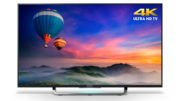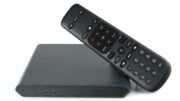I do this stuff so you don’t have to.
As most people now know, Microsoft Internet Explorer is a dead man walking. While it is actually part of Windows 10, it’s hidden so successfully that you’d never know it. In its place is Microsoft Edge, a new browser designed from the ground up to be fast, secure, and simple. I decided to try living my life using only Microsoft Edge for a week to see if it could be done. I’m connected pretty much all the time so this should be a good test for anyone who really wants to jump into the browser experience.
What does Edge bring to the table?
I will give Microsoft a lot of credit for doing exactly what they said. Edge is hands down the fastest browser I’ve ever used. I don’t need some fancy benchmark to tell me that — it starts almost instantly and feels incredibly fast. Where you really notice it is with a lower-powered computer. Edge works almost instantly on my travel laptop and even starts up and executes reliably on my old netbook. That same netbook takes nearly 60 seconds to launch Chrome.
They’ve managed to take a lot of the distraction away from the browsing experience and leave a very clean screen that’s dominated by the content you want to see. This is a huge change to the toolbar-loaded mess that we all lived with back in the days of Internet Explorer’s dominance. Honestly Edge looks very contemporary and really makes Chrome and Firefox look like yesterday’s news.
The best part of Edge is the security. It’s baked into Edge so thoroughly that you can’t even turn off some of it. It’s thoroughly integrated with Microsoft’s Defender service and uses smart screening to try to identify the bad stuff quickly. It also lets you turn off Flash with one quick toggle and doesn’t support Java at all (which is a good thing.) You’re just not going to get into the kind of trouble that used to plague Internet Explorer users.
Edge works well with touch-enabled devices and does a better job of using predictive text than Chrome or Firefox. It scales web pages to smaller devices well and includes a reading view similar to what Apple does with Safari on iOS, where it boils the page down to a one-column view that makes it easier to see on smaller screens. Unlike Apple’s implementation, Edge’s seems to need special coding on the web site side, meaning it doesn’t work with all sites (notably it doesn’t work with this site yet.)
Here’s what I liked
Using Windows 10 as a touch device isn’t so easy with Chrome or Firefox, and it was a total trainwreck with Internet Explorer for Windows 8 Modern (what a name!) but with Edge, it was fairly good. I don’t know exactly how or why, but the keyboarding experience was better with Edge. Autocorrect works better, predictive text was always there (while on Chrome it tends to drop out or stop working.) Windows 10 has the worst keyboarding experience of any mobile operating system, though and even a superior browser isn’t going to fix that. But I don’t want to dwell on negatives. The point is that if you are going to do some typing on a Windows 10 touch device, Edge is the one for you.
Windows 10 passed several real-world compatibility tests for me just as well as Chrome or Firefox and much better than Internet Explorer. It was able to use web fonts and HTML5 video better than IE, and executed Javascripts quickly. (Note to those who are confused: Javascript is different from Java; Javascript is a strong part of the web-browsing experience that enables simple actions, while Java is a bloated mess that doesn’t belong in any current web page.)
As I said, the launch experience was super fast and reliable. Chrome 64-bit sacrifices launch speed for an overall faster experience, while Edge gives you both. Firefox has never been very fast for me, and both Chrome and Firefox slow down when opening after a new version is installed, which seems to be roughly every 3 weeks.
Here’s what I didn’t like
It’s not surprising that Edge wants to be deeply integrated with Bing, Microsoft’s Google competitor. In fact, all of Windows 10 wants to be integrated with Bing, including search suggestions that pop up anywhere they possibly can. It took a lot of work to set Edge to use Google most of the time, including as a home page and address bar search. Once the work was done it was fine but it took a long while to get there.
There’s no easy way to start Edge in any sort of private browsing mode. Sure, it’s just a keystroke away (Ctrl-Shift-P launches InPrivate browsing) but one nice feature of Internet Explorer is that you could have it clear your search history on exit and not accept cookies, making it pretty much private by default. Firefox has a similar solution. Edge doesn’t. That’s probably because they really want you to use Bing, which scours your search history to help understand what to suggest. I don’t like that, and I wish that it were easier to stay private with Edge.
While I give Edge high marks for the user interface, it’s almost too clean. I’m stymied sometimes trying to figure out where I’m going because it’s all hidden. You can turn on a favorites bar similar to Chrome and Firefox, but if you don’t, finding favorites isn’t hard… it just involves pushing a button that doesn’t look like anything you’ve ever seen before. There are also two other prominent buttons, one for web notes and one to share those notes. I really never got that feature to work right and it’s a big waste of real estate putting them up there. Edge eschews the “hamburger” menu in favor of three dots. It’s not a big deal getting used to it but it seems like everyone is moving toward the hamburger look.
Personally I didn’t miss plugins, but I know a lot of people would. I missed ad-blockers, that was about it. Still, if you rely on plugins for Chrome or Firefox, you’ll want to stay away from Edge, which basically has no plugin infrastructure and isn’t likely to.
The biggest usability issue I found with Edge had to do with forms. There’s something not quite right about the way forms are handled. By “forms” I mean anywhere that you put in text, whether it’s one word or a story like this. Edge seems to lose its way sometimes, and you can’t type. The only way to fix the page is to reload it which sometimes means losing what you’ve already entered into other forms. This is a pretty big part of what I do and that makes Edge a no-go as my permanent browser choice.
I also lost the ability to zoom into pages several times while using Edge. You should be able to zoom using Ctrl-+ or using the pinch gesture but several times I found this didn’t work. Since Reading View doesn’t work all the time either, there were some sites that were pretty tough to read on smaller devices.
Finally, I was surprised to see that Edge wasn’t as good at orientation changes as Chrome or Firefox. What I mean is that when you turn your device from landscape to portrait, Edge did a worse job of rendering pages and it was slower to get to a finished page. Reloading the page usually fixed rendering issues, but this meant that it was very slow to do orientation changes especially compared to an iPad.
Wrapping it all up
Most people will be well served by Edge, Chrome, or Firefox and will happily leave Internet Explorer back in 2008 where it belongs. All are fast and compatible with the latest web standards. However, Edge still has a ways to go before it does what power users want. The lack of plugins will frustrate some, and the problems with forms were a deal-breaker for me. Still, if you’re running an underpowered device, give it a try and you’ll be surprised at how fast it is.





